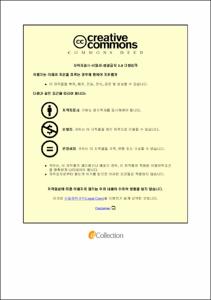Prediction of chromatographic elution order of analytes from quantitative structure-retention relationship via nonlinear mathematical programming
- Alternative Title
- 비선형 수리 계획법을 통한 정량적 구조-체류 관계로부터 분석물의 크로마토 그래피 용출 순서의 예측
- Abstract
- Prediction of retention time from molecular structure using quantitative structure retention relationships (QSRRs) is a powerful tool for development of chromatographic methods in reversed-phase high performance liquid chromatography (RP-HPLC). However, its fundamental limitation lies in the fact that low error in prediction of retention time does not necessarily guarantee that in prediction of elution order. In this work, we propose new methods for prediction of elution order from QSRRs through mathematical programming: nonlinear programming (NLP) and multi-objective programming (MOO). Two case studies are evaluated: (i) separation of organic molecules on Supelcosil LC-18 column, and (ii) separation of peptides on seven columns in varying chromatographic conditions. Results have shown that when compared to predictions based on conventional QSRR, for MOO the relative root mean square error (%RMSE) of elution order prediction decreases by 48.84 %, while the %RMSE of retention time prediction increases by 4.22 % on average across both case studies and all the chromatographic columns. On average across all the columns, all the chromatographic conditions and all the case studies, for NLP percentage root mean square error (%RMSE) of retention time increases by 29.13 %, while the %RMSE of elution order decreases by 37.29 %. Therefore, marginal sacrifice of %RMSE of retention time prediction led to a considerable increase in the predictive ability of elution order of the QSRR models across all the case studies. Predictive ability in terms of both retention time and elution order and the corresponding domains of applicability were also defined. The models were deemed stable and robust with little to none structural outliers. As evident from our proof-of-concept study, the developed method can be applied to complex analytical mixtures; such as proteomics mixtures with thousands of peptides where it can greatly facilitate peptide identification.
정량적 구조-체류 관계 (quantitative structure-retention time relationship, QSRR)를 이용하여 분자 구조로부터 체류 시간을 예측하는 것은 역상 고속 액체 크로마토그래피 (reversed-phase high performance liquid chromatography, RP-HPLC) 기반 분리방법을 개발하는데 있어 강력한 도구이다. 그러나, 그 근본적인 한계는 분석물의 용출 순서를 예측할 때 체류 시간 예측의 오차가 낮다고 해서 반드시 용출 순서 예측의 오차가 낮은 것은 아니라는 사실에 있다. 본 연구에서는 비선형 계획법 (nonlinear programming, NLP)과 다목적 계획법 (multi-objective programming, MOO)의 수학적 계획법을 통해 QSRR에서 용출 순서를 예측하는 새로운 방법을 제안하고자 한다. 다음의 두 가지 사례 연구– (i) Supelcosil LC-18 컬럼에서의 유기 분자의 분리 및 (ii) 다양한 크로마토그래피 조건에서의 7 개 컬럼에서의 펩타이드 분리–에서 새로운 방법이 평가되었다. 전통적인 QSRR을 기반으로 한 예측과 비교할 때, MOO의 경우 두 사례 연구 및 모든 크로마토그래피 컬럼에 대해 용출 순서 예측의 상대 평균 제곱 오차 (relative root mean square error, %RMSE)는 48.84 % 감소하는 반면, 체류 시간 예측의 % RMSE는 평균 4.22 % 증가하는데 그침을 보였다. NLP의 경우 두 사례 연구 및 모든 칼럼과 조건에서 평균적으로 용출 순서의 % RMSE는 37.29 % 감소한 반면 체류 시간 예측의 % RMSE는 29.13 % 증가한 것으로 나타났다. 따라서 체류 시간 예측의 % RMSE를 약간 희생시키면 모든 사례 연구에서 QSRR 모델의 용출 순서 예측 능력이 상당히 증가하게 됨을 확인하였다. 모든 사례 연구에 대해 체류 시간과 용출 순서 에 대한 예측 능력과 상응하는 적용 범위 (applicability domain)가 정의되었다. 모델은 거의 구조적 특이 치를 제외하고는 안정적이고 견고한 것으로 확인되었다. 이 논문의 개념 증명 연구에서 분명히 알 수 있듯이, 개발된 방법은 펩타이드 확인을 매우 용이하게 할 수 있는 수천 개의 펩타이드가 있는 프로테오믹스 (proteomics) 혼합물과 같은 매우 복잡한 분석 혼합물에도 적용될 수 있다.
- Issued Date
- 2019
- Awarded Date
- 2019. 8
- Type
- Dissertation
- Keyword
- High performance liquid chromatography elution order prediction elution order quantitative structure-retention relationship mathematical programming multiple linear regression non-linear programming genetic algorithms multi-objective optimization HPLC QSRR MLR NLP GAs MOO
- Publisher
- 부경대학교
- Affiliation
- 부경대학교 대학원
- Department
- 대학원 화학공학전공
- Advisor
- Jay Liu
- Table Of Contents
- CHAPTER I 1
1. INTRODUCTION 1
1.1. Research background and motivation 1
1.2. Literature survey 2
1.2.1. High performance liquid chromatography (HPLC) 2
1.2.1.1. Normal Phase HPLC 7
1.2.1.2. Reverse Phase HPLC 7
1.2.1.3. Size-exclusion HPLC 7
1.2.1.4. Ion-Exchange HPLC 8
1.2.1.5. Solvent Reservoir 8
1.2.1.6. Pump 8
1.2.1.7. Sample Injector 9
1.2.1.8. Columns 9
1.2.1.9. Detector 9
1.2.1.10. Data Collection/Recorder Devices 10
1.2.2. Prediction of elution order in HPLC 11
1.2.3. Quantitative structure-retention relationships (QSRR) 14
CHAPTER II 18
2. THEORY 18
2.1. Mathematical programming 18
2.1.1. Multiple linear regression (MLR) 19
2.2. Multi-objective optimization (MOO) 19
2.2.1. Genetic Algorithms (GAs) 22
2.3. Non-linear programming (NLP) 25
2.3.1. Interior point algorithm 26
CHAPTER III 27
3. EXPERIMENTAL SETUP 27
3.1. Materials 27
3.2. HPLC measurements 27
3.2.1. Equipment and chromatographic conditions 29
CHAPTER IV 33
4. METHODOLOGY 33
4.1. QSRR model development 33
4.1.1 First case study 33
4.1.2. Second case study 34
4.2. Elution order prediction 35
4.2.1. Multi-objective optimization (MOO) 35
4.2.1.1. Objective functions for MLR-MOO 36
4.2.1.2. Selection of an optimal MLR-MOO solution 36
4.2.2. Non-linear programming (NLP) 39
4.3. QSRR model validation 41
4.3.1. External validation 41
4.3.2. Applicability domain 41
CHAPTER V 43
5. RESULTS AND DISCUSSION 43
5.1. Prediction of elution order 43
5.2. MLR(-MOO-) based QSRR model 44
5.3. MLR(-NLP-) based QSRR model 55
CHAPTER VI 63
6. CONCLUSIONS 63
SUMMARY IN KOREAN (요약) 64
REFERENCES 66
ACKNOWLEDGMENTS 71
- Degree
- Master
- Files in This Item:
-
-
Download
 Prediction of chromatographic elution order of analytes from quantitative structure-retention relati.pdf
기타 데이터 / 1.67 MB / Adobe PDF
Prediction of chromatographic elution order of analytes from quantitative structure-retention relati.pdf
기타 데이터 / 1.67 MB / Adobe PDF
-
Items in Repository are protected by copyright, with all rights reserved, unless otherwise indicated.